|
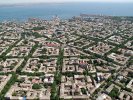

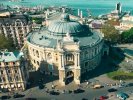
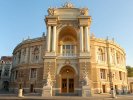
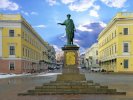
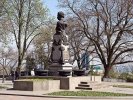
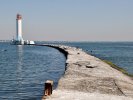
|
Panoramic city tour includes the main hightlights: Potemkin Steps, the monument to Duke de Richelieu, Deribassovska street, monumemnt to A. Pushkin, the Opera and Ballet Theatre etc.
The monument to Duke de Richelieu. Duke de Richelieu, French nobleman, soldier, and statesman who, as premier of France, obtained the withdrawal of the Allied occupation army from France. Earlier, he had served Russia as governor of Odessa and was notable for his progressive administration there. The monument to Duc de Richelieu designed by Melnikov and Martos with bas reilefs depicting agriculture, trade and justice ornamenting the pedestal of the bronze statue of Richelieu overlooking the port and stairs.
The Potemkin Steps are a formal entrance into the city from the direction of the sea. Sure, each city has its own place of mostly pronounced originality. For Odessa, no doubt, it will be Potemkin Stairs. The stairs leading from Prymorsky Boulevard down to the sea were constructed from 1837 through 1841 to the design of the architect F. Bofford. This imposing monument numbers 192 stairs arranged in ten flights and flanked by two-meters thick parapets. The difference in width between the highest (13.4 m) and the lowest (21.6 m) flights produces an optical illusion that enhances the grandeur of the structure. Originally, the stairs were faced with grey Trieste sandstone With time, however, the sandstone weathered and was replaced with granite. The famous Potemkin Stairs serve as a symbol of the city. The stairs name was taken from the battleship Potemkin and were to be later memorialized in the famous film of that name by the Russian producer Sergei Eizenstein.
Deribasovskaya Street is the walking street that is the heart of Odessa with it's many cafes, shops, and restaurants. The Passage Hotel building is particularly notable for it's fabulous design and sculptures inside the atrium passage itself located at the north end of the street.
Monument to A. Pushkin. The Odessa period of Pushkin's art was a frutful one. During 13 months of his staying here the great poet begun to work under "Tzigans" poem, wrote "The fountain of Bakhchisaray" and two chapters of "Eugene Onegin" novel. The odessits honoured the memory of the talented artist; now one of the main street of the city is named after Alexander Pushkin. The monument to Alexander Pushkin, located just opposite the Municipal Building, was unveiled in 1889. A bronze bust of the great poet was modelled by the sculptor Zh. Polonskaya. A granite pedestal is given the form of a truncated pyramid edges. Water jetting from the fishes' mouths flows down into the shell-shaped bowis of iron placed on the granite stylobate.
The Opera and Ballet Theatre is entitled to be called the elder among a great number of cultural institutions. The building of Odessa Opera and Ballet House was built in 1887 in the style of Vienna "baroque". There is a sculptural group over the front, portraying one of the muse – a patroness of art – Melpomena. She is sitting in the chariot, harnessed by the four furious panthers, which were subdued her. A little bit lower there are sculptural groups from the ancient mythology subjects. The most beautiful part of the building - is its hall. Its architecture is maintaines in "rococo" style.
The Theatre itself is interesting not only by us architecture, but by its rich creative biography. The great merit in the development of musical culture in the south of our country belongs, to this theatre.
There are 25 operas, such as "Carmen", "Aida", "Il Trovatore", "La Traviata", "Cavaleria Rusticana", "I Pagliacci", "Iolanta", "Madam Batterfly", Rigoletto", and others are in the repertoire of theatre. The theatre opera singers were appearing on the stages of Spain, Italy, France, Finland, Japan, Hungary, Bulgaria, Romania, Belgium, Greece and the individual opera soloists – practically in all the countries of the world.
|
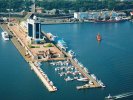




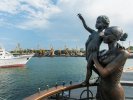

|
